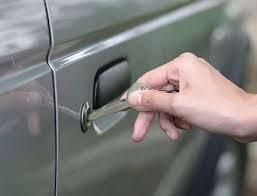Car Door Lock Replacement: Factors to Consider and When It's Necessary
Having functional car door locks is crucial for your vehicle's security and convenience. Issues with car door locks can lead to frustrating situations, such as being locked out of your car or unable to secure it properly. This article explores the factors to consider and when it’s necessary to replace your car door locks to ensure your vehicle remains safe and accessible.
Signs You Need to Replace Your Car Door Lock
Difficulty in Locking/Unlocking
If you’re experiencing difficulty locking or unlocking your car doors, it might be a sign that your car door locks need replacing. This issue can arise from internal wear and tear over time.
Key Jamming or Not Turning
A key that frequently jams or doesn’t turn in the lock indicates a problem. This could be due to worn-out internal components or a damaged key, suggesting it’s time for a replacement.
Visible Damage or Wear
Visible signs of damage, such as rust, dents, or scratches on the lock, can compromise its functionality. If your car door lock shows these signs, it may need replacing to maintain security.
Frequent Lockouts
Frequent lockouts, where you’re unable to enter your car due to lock issues, are a clear indication that the lock mechanism is failing and should be replaced.
Factors to Consider Before Replacing Car Door Locks
Cost of Replacement
The cost of replacing car door locks varies depending on the car model and lock type. Consider your budget and get quotes from professionals to understand the expense involved.
Type of Lock System
Different cars have different lock systems, such as traditional mechanical locks, keyless entry systems, or smart locks. Ensure the replacement lock is compatible with your vehicle’s system.
Compatibility with Car Model
Not all locks are universal. Verify that the replacement lock is compatible with your specific car model to avoid installation issues.
DIY vs. Professional Replacement
Decide whether you want to replace the lock yourself or hire a professional. DIY replacement can save money but requires the right tools and knowledge. Professional replacement ensures proper installation and functionality.
Types of Car Door Locks
Traditional Mechanical Locks
Traditional mechanical locks use a physical key and are the most basic type of car door lock. They are durable but can wear out over time.
Keyless Entry Systems
Keyless entry systems allow you to unlock your car with a remote or fob. These are convenient but can have electronic issues.
Smart Locks
Smart locks offer advanced security features and can be controlled via smartphone apps. They are sophisticated but can be costly to replace.

When to Replace vs. Repair Car Door Locks
Severity of the Damage
Consider the extent of the damage to the lock. Minor issues might be repairable, while severe damage often requires replacement.
Frequency of Issues
If you’re experiencing frequent problems with your car door locks, it’s a sign that the lock is failing and should be replaced rather than repaired repeatedly.
Age of the Lock
Older locks are more prone to wear and tear. If your car’s locks are old, it might be more cost-effective to replace them than to keep repairing them.
Cost Comparison
Compare the cost of repairs versus replacement. In some cases, continuous repairs can end up being more expensive than a complete lock replacement.
DIY Car Door Lock Replacement
Tools Needed
To replace a car door lock yourself, you’ll need basic tools such as screwdrivers, pliers, and possibly a socket set.
Step-by-Step Guide
- Remove the interior door panel.
- Disconnect the old lock mechanism.
- Install the new lock mechanism.
- Reattach the interior door panel.
Pros and Cons
DIY replacement can save money and be a rewarding experience. However, it requires time, effort, and some technical know-how.
Preventive Measures to Avoid Lock Issues
Regular Maintenance
Perform regular maintenance, such as lubricating the lock and keeping it clean, to prevent issues.
Keeping Locks Clean and Lubricated
Avoid dirt and debris buildup by cleaning the lock regularly and applying appropriate lubricants.
Avoiding Excessive Force
Use your keys gently to avoid damaging the lock mechanism. Excessive force can cause premature wear and tear.
Conclusion
Car door locks are essential for your vehicle’s security and convenience. Regular maintenance and prompt attention to lock issues can prevent bigger problems. Whether you opt for DIY replacement or hire a professional, ensuring your car door locks are in good working condition is crucial. Addressing lock problems early will help you avoid lockouts and maintain your car’s security. For more serious issues, don’t hesitate to seek professional help to ensure your car remains safe and accessible.
Key Fob Issues: Troubleshooting and DIY Repair for Remote Door Locks!
Call Us Any Time!






